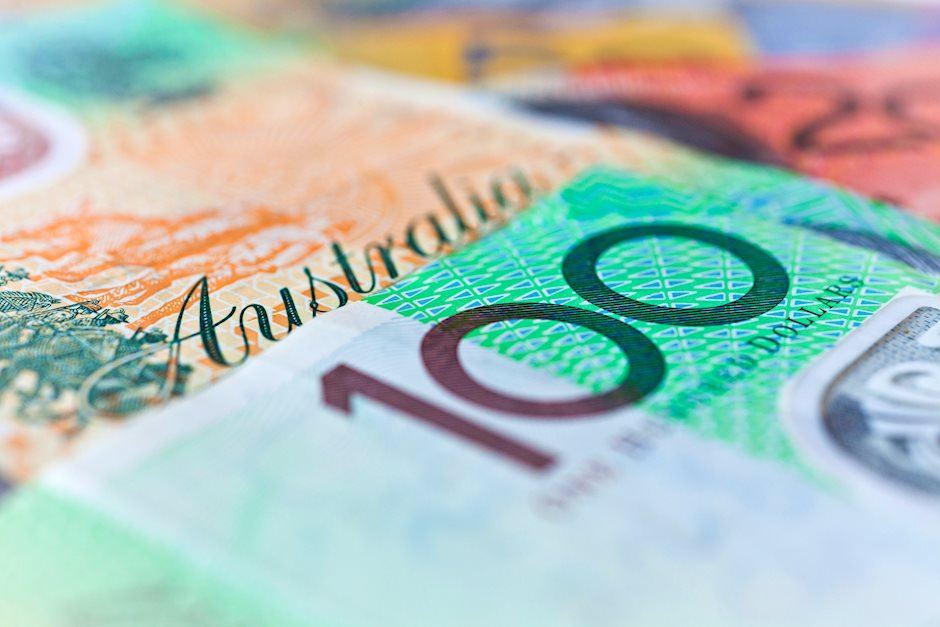AUD/USD rebounds from 0.6720 as US Dollar retreats after higher US jobless claims
- AUD/USD bounces back as the US Dollar falls after a short-lived pullback post US weekly jobless claims data.
- The upside in the US Dollar remains capped by optimism over Fed interest rate cuts in September.
- Australian Composite PMI returns to expansion in August.

The AUD/USD pair discovers buying interest from the intraday low of 0.6725 in Thursday’s New York session. The Aussie asset is expected to resume its upside journey as the US Dollar (USD) retreats after the release of the United States (US) Initial Jobless Claims report for the week ending August 16.
The report showed that the number of individuals claiming jobless benefits for the first time came in higher at 232K from the estimates of 230K and the prior release of 228K, upwardly revised from 227K, accelerating worries of deteriorating labor market conditions. The US Dollar Index (DXY), which tracks the Greenback’s value against six major currencies, falls after a short-lived pullback move to near 101.40.
The near-term appeal of the US Dollar is already vulnerable as the Federal Reserve (Fed) seems to be on track to start reducing interest rates in September. The latest Federal Open Market Committee (FOMC) minutes showed that the ‘vast majority’ of officials see interest rate cuts appropriate in September, given that price pressures continue to ease as expected.
Meanwhile, investors await Fed Chair Jerome Powell’s speech at the Jackson Hole (JH) Symposium on Friday. Investors will look for cues about the likely size of interest rate cuts in September and how much they will be reduced by the year-end.
In the Asia-Pacific region, the Australian Dollar (AUD) has outperformed the US Dollar in the last three weeks amid firm speculation that the Reserve Bank of Australia (RBA) will not cut interest rates this year. The RBA is expected to leave its Official Cash Rate (OCR) at its current level for an extended period as officials remain vigilant to upside risks to inflation.
On the economic data front, the flash Australian Judo Bank PMI report showed that the overall business activity expanded to 51.4 after contracting to 49.9 in July, boosted by a sharp increase in the service sector. While activities in the manufacturing sector contracted at a slower pace.
Australian Dollar FAQs
One of the most significant factors for the Australian Dollar (AUD) is the level of interest rates set by the Reserve Bank of Australia (RBA). Because Australia is a resource-rich country another key driver is the price of its biggest export, Iron Ore. The health of the Chinese economy, its largest trading partner, is a factor, as well as inflation in Australia, its growth rate and Trade Balance. Market sentiment – whether investors are taking on more risky assets (risk-on) or seeking safe-havens (risk-off) – is also a factor, with risk-on positive for AUD.
The Reserve Bank of Australia (RBA) influences the Australian Dollar (AUD) by setting the level of interest rates that Australian banks can lend to each other. This influences the level of interest rates in the economy as a whole. The main goal of the RBA is to maintain a stable inflation rate of 2-3% by adjusting interest rates up or down. Relatively high interest rates compared to other major central banks support the AUD, and the opposite for relatively low. The RBA can also use quantitative easing and tightening to influence credit conditions, with the former AUD-negative and the latter AUD-positive.
China is Australia’s largest trading partner so the health of the Chinese economy is a major influence on the value of the Australian Dollar (AUD). When the Chinese economy is doing well it purchases more raw materials, goods and services from Australia, lifting demand for the AUD, and pushing up its value. The opposite is the case when the Chinese economy is not growing as fast as expected. Positive or negative surprises in Chinese growth data, therefore, often have a direct impact on the Australian Dollar and its pairs.
Iron Ore is Australia’s largest export, accounting for $118 billion a year according to data from 2021, with China as its primary destination. The price of Iron Ore, therefore, can be a driver of the Australian Dollar. Generally, if the price of Iron Ore rises, AUD also goes up, as aggregate demand for the currency increases. The opposite is the case if the price of Iron Ore falls. Higher Iron Ore prices also tend to result in a greater likelihood of a positive Trade Balance for Australia, which is also positive of the AUD.
The Trade Balance, which is the difference between what a country earns from its exports versus what it pays for its imports, is another factor that can influence the value of the Australian Dollar. If Australia produces highly sought after exports, then its currency will gain in value purely from the surplus demand created from foreign buyers seeking to purchase its exports versus what it spends to purchase imports. Therefore, a positive net Trade Balance strengthens the AUD, with the opposite effect if the Trade Balance is negative.
Author

Sagar Dua
FXStreet
Sagar Dua is associated with the financial markets from his college days. Along with pursuing post-graduation in Commerce in 2014, he started his markets training with chart analysis.

















